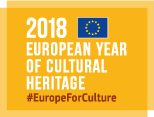The GRAVITATE platform



Challenge: WHY the innovation has been developed? What problem is addressed and why has not been not solved before?
A common issue affecting archaeological artefacts is their fragmentation and dispersion among different collections. Often fragments belonging to a single object are held by different institutions, private or public, which might be scattered around very distant locations. The study of such collections and their exhibit to visitors pose several challenges: the integrity of the object, its relations with other objects as well as the simultaneous access to collections are instrumental to answer archaeological questions
Solution: WHAT the solution is about? HOW it goes beyond the state of the art?
The GRAVITATE project has developed a digital research platform, addressing the digital re-unification of items belonging to the same collection, the re -association of objects under defined criteria, and the re -assembly of fragmented artefacts. The methodology integrates archaeological research with computer graphics, computer vision, natural language processing and semantic technologies. The platform permits to investigate objects looking at their 3D geometry, surface properties, colouring texture and related semantic information within a single digital environment, where they can conduct 3D shape analysis, feature comparison, semantic and 3D annotations, similarities search etc. by exploring collections. 450 artefacts have already been studied, including a collection of 250 ancient votive terracotta statue from Salamis (Cyprus).
End-users and examples of uses: WHO will beneficiate/ is beneficiating from the solution? WHERE and HOW the solution has been adopted? How will impact people or end-users? Add as more as possible examples of market and society uptakes
The users of GRAVITATE will mainly be CH practitioners: curators, researchers, restorers, archaeologists and historians. GRAVITATE toolset is flexible enough to support them in their everyday job as reported by themselves in the performed user trials. Nevertheless, the GRAVITATE platform can be adapted to deal with a large variety of objects with similar challenges. Examples are forensic activities dealing with bodies and bones, industries testing crash and breakage patterns of their manufacturing products, geology studies investigating meteorites crashed and broken in several pieces, medical studies, etc.
Future possibilities: Future market perspectives when the innovation will be fully available or in use
Centre of Competence
References for more information (eg. website, social media)
Contacts:
Stefano Modafferi (sm@it-innovation.soton.ac.uk)
Giusi Sorrentino (g.sorrentino@cyi.ac.cy)
Info (gravitate_project@cyi.ac.cy)
info (archeocc@cyi.ac.cy)
Application sectors:
- Enabling digital technologies for CH
Objectives:
- Knowledge sharing and education
- Other
RRI Dimensions:
- Public Engagement
- Science Education
- Governance
Communities:
- Advanced future technologies for heritage and arts

